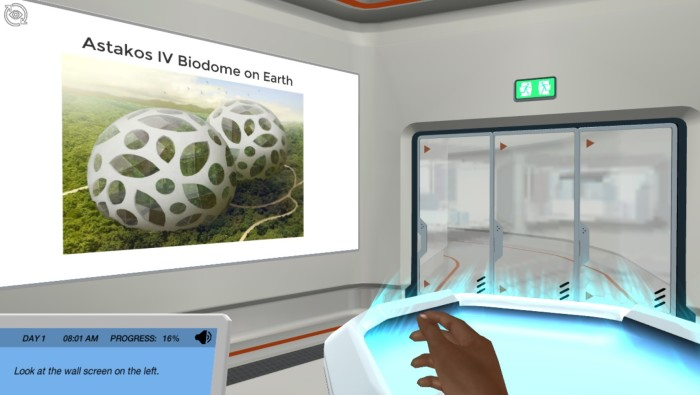%20(1).png)
Behavioral thermoregulation is the process by which animals regulate their body temperature through their behavior. In humans, thermoregulatory behaviors range from moving to warmer or cooler areas to changing clothes or switching on the AC. Other animals also rely on behavioral thermoregulation – like a chameleon changing colors, or vultures basking in the sun!
While these behaviors are intriguing to say the least, they vary with the species and habitat. Why an animal chooses a certain thermoregulatory behavior over others, and how this choice changes with the habitat are questions that constitute an interesting area of study. Interesting, but still complicated. Here, we list five ways to teach behavioral thermoregulation to your students in an engaging manner.
Listening to a teacher go on and on about a complex scientific concept can be tedious. Even educators can relate with that! Interactive models can communicate with the students in a language they find personal, delightful and perhaps even inspiring.
Take Labster’s behavioral thermoregulation simulation, for example. In our highly interactive simulation, the endgame for the students is to help keep a gecksi alive. Gecksi is a fictional reptilian organism from the earth-like planet Astakos IV! On this thrilling alien-saving mission, the students must:
· Study the behavioral mechanisms that the gecksi uses to maintain its temperature,
· Determine the ideal temperature range for the gecksi to thrive, and
· Accordingly choose an appropriate habitat for it.
This whole exercise requires the students to constantly interact with the study material, keeping them engaged and excited.

With games and activities, a classroom metamorphosizes into a fun playscape filled with interaction, communication, and learning. This metamorphosis is just what many educators need to make their study subjects more exciting for students.
For example, to teach behavioral thermoregulation, you can invite an animal handler to bring a friendly gecko to your class. The students can see the gecko up close and perhaps even touch the reptile. Perhaps the animal handler could even bring in a harmless chameleon for the students to see its thermoregulatory color changes.
Not all students are comfortable around animals, which means that teaching behavioral thermoregulation using live animals can sometimes be difficult. This is where technology comes to our aid. Technology has made it possible for anyone to enjoy activities that may be too frightening for them in real life. Simulation, virtual reality and augmented reality are just a few of these advanced technologies.
For example, in Labster’s behavioral thermoregulation simulation, the students virtually interact with an obscure, reptile-like organism from a fictional exoplanet. In a simulated setting, they have to:
· Study the organism’s thermoregulatory behaviors,
· Predict its energy and water budgets and how its habitat might affect these budgets, and
· Help it survive in the most apt habitat by using the observations about its thermoregulatory behaviors.
This way, our simulation provides a safe and engaging environment for the students to study behavioral thermoregulation in animals.

Discover Labster's behavioral thermoregulation virtual lab today!
Educators teaching behavioral thermoregulation may hear this from some cynical students: “How can studying this help me make a career?”. It is a valid question, but one with some great, worthwhile answers. Discuss with your students the careers that depend on studying behavioral thermoregulation. This will keep them informed and inspire them to learn.
Talk to your students about how zoologists model behavioral thermoregulation to predict the impact of climate change on animals. Tell them how animal handlers, like reptile handlers, must fully understand behavioral thermoregulation to properly care for these organisms. These exciting careers can allow the students to care for the earth’s biodiversity while uncovering some complex physiological phenomena.
When you discuss behavioral thermoregulation only in the context of its principles and mechanisms, many students may lose interest. Real-world applications of the topic demonstrate its pertinence in the current times and make the students enthusiastic about learning it.
For example, talk about how climate change may be forcing animals to adopt unique thermoregulatory behaviors for survival. Discuss why those with ectothermic animals like lizards as pets need to provide adequate light and heat to these organisms.
Behavioral thermoregulation takes many shapes and forms, some that we may not even have discovered yet. This diversity of thermoregulatory behaviors only makes it more complicated to teach as well as learn. The innovative teaching methods we have discussed here will make behavioral thermoregulation an exciting topic for your students.
Try our free 30-day All Access Educator's Pass today and teach with the Behavioral Thermoregulation simulation alongside 300+ other virtual labs!

Labster helps universities and high schools enhance student success in STEM.
Request DemoRequest a demo to discover how Labster helps high schools and universities enhance student success.
Request Demo